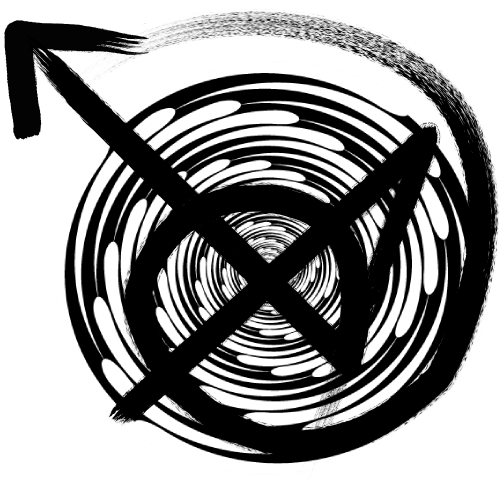EU doubles down on asylum double standards
More than 1.1 million refugees and asylum seekers have entered Germany this year—outpacing the 890,000 that arrived during the Mediterranean migration crisis in 2015. Back then, the vast majority were Syrians. This year, around one million of those who have entered are Ukrainians, although Syrians, Afghans, and others continue to arrive. For Ukrainians, the EU Commission this week extended the Temporary Protection Directive—first activated in March, and allowing them to live, work, and access services throughout the EU. Some 4.2 million Ukrainians have registered under the directive, which is now valid until March 2024. Meanwhile, the EU is pursuing much less welcoming policies for asylum seekers and migrants from other parts of the world. These include the the Dublin Regulation, that since 2003 has required asylum seekers to apply for protection in the member state they first entered—often prolonging perilous journeys to reach sanctuary beyond countries with harsh immigration policies, such as Poland and Hungary.
Member states are now urgently trying to curb an uptick in arrivals along the Western Balkans route (through Albania and Serbia). And, in the latest push to try to externalize asylum processing, Spain, Greece, Italy, and Malta plan on floating a proposal to have the EU border agency Frontex set up asylum processing centers in countries outside the EU.
However, a recently leaked report from the EU's anti-corruption watchdog OLAF paints a damning picture of the agency's disregard for fundamental rights. The report, which prompted Frontex director Fabrice Leggeri to resign, revealed that the agency has been covering up violence against asylum seekers by the Greek coast guard in the Aegean sea.
From The New Humanitarian, Oct. 14

















Europe's squabbles over Mediterranean migrant boats
After a weeks-long standoff, Italy's new far-right government allowed around 800 people rescued in the central Mediterranean by three NGO boats to disembark in Italian ports. A fourth NGO ship carrying around 230 people that had been denied permission to disembark in Italy docked in a French port, touching off a row between the two countries and prompting France to withdraw from a voluntary EU asylum-seekers relocation mechanism. There is an international legal obligation to rescue people in distress at sea, and coastal states are supposed to take responsibility for rescues in their search and rescue regions. But EU states have sought to avoid this responsibility in recent years. Around 87,000 people have crossed the central Mediterranean to Italy this year compared to around 55,000 over the same period last year. (TNH)
'Pushbacks' to blame in Italy shipwreck disaster
Nearly 70 people have been confirmed dead following a shipwreck in rough water just off a beach in southern Italy on Feb. 26. The boat set sail from Turkey four days earlier, taking a more dangerous route that has become increasingly popular as hardline policies—including pushbacks—have made it harder for asylum seekers and migrants to reach Greece. The shipwreck comes as Italy’s far-right government has been cracking down on search-and-rescue NGOs. (TNH)
Video captures Greek coast guard abandoning refugees
An Austrian aid worker released video footage May 20 capturing Greek officials mistreating refugees seeking asylum within the country. The New York Times verified the footage with several of the refugees, who have since been relocated to Turkey. The refugees interviewed originated from Somalia, Eritrea and Ethiopia.
The footage shows refugees—including women and children—being gathered by Greek officials and driven in vans. Officials are shown taking possession of the refugee's items, forcing them onto speed boats, and handed them off to the Greek Coast Guard. From there, video captures Coast Guard agents placing the refugees on another boat which is floated into the Aegean Sea, where they were collected by Turkish Coast Guard officials. (Jurist)
At least 79 dead in Mediterranean migrant boat disaster
Up to 500 people are still missing from a packed migrant boat that sank off Greece, the UN Refugee Agency says. At least 79 people have been declared dead in the disaster.
The overcrowded vessel was first spotted in distress off the coast of Pylos on June 13. The boat is beleived to have capsized the following day, causing the Greek coast guard to mount a search and rescue operation. The court guard alleged that the boat refused several offers of assistance from both its own ships and merchant vessels. They stated that people on board insisted they wanted to continue to Italy.
However, Alarm Phone, a network of activists who run a hotline for migrant boats in distress, argued that they had been in contact with people they believe who were on the same vessel and desperate for help. It added that people may have been scared to encounter Greek authorities due to its systematic use of "pushback" measures. (Jurist)
Survivors of Pylos migrant boat disaster file criminal complaint
A group of 40 survivors of a migrant boat sinking in Greek waters filed a criminal complaint Sept. 14 against all parties they deem responsible for the tragedy, according to a press release from the survivors’ representatives. The survivors are also demanding a thorough investigation into the causes of the sinking and the authorities’ response. (Jurist)
Greece: judge dismisses Pylos shipwreck case
A Greek judge on May 21 dropped the charges against nine Egyptian men involved in a 2023 migrant boat wreck off Pylos that killed at least 82 people. Eftichia Kontaratou, president of the court of appeal of Kalamata, found that the court did not have jurisdiction to hear the case, as the sinking happened in international waters. (Jurist)
UN agencies criticize Greek response to Pylos shipwreck
The UN Refugee Agency (UNHCR) and the International Organization for Migration (IOM) released a statement June 14 criticising Greece's response to the shipwreck off the coast of Pylos in 2023. The statement was released exactly one year after the "tragic" shipwreck which resulted in the loss of hundreds of people on the overcrowded vessel. (Jurist)